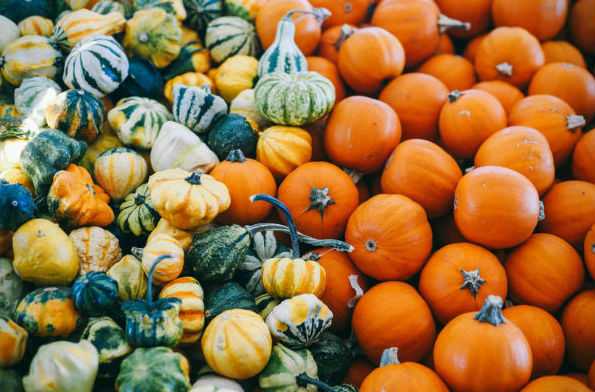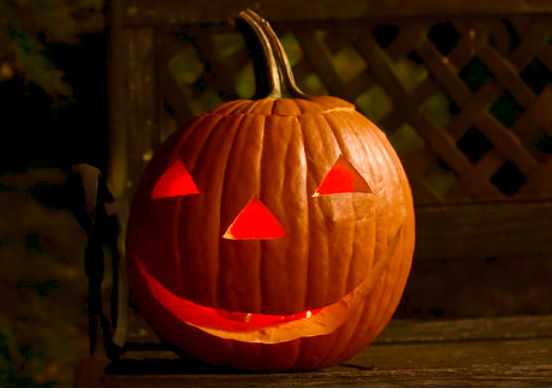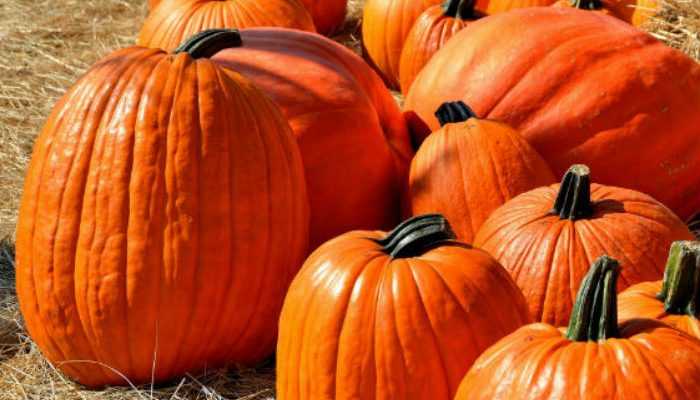If autumn were a school play, a pumpkin would be the star. From Halloween until Thanksgiving, pumpkin-themed tablescapes, decorations, and recipes dominate our homes. Many Americans flock to pumpkin patches in search of the perfect carving pumpkin with their families. Others sift through large bins at the grocery store or roadside stand to find the main ingredient for pumpkin recipes. When harvesting or purchasing the best pumpkin it is important to recognize the signs of ripeness and consider its purpose – will it be used primarily as decoration or as an ingredient in a fall recipe? If you follow our advice you will see that finding the best pumpkin is not a big deal.
Harvesting a Pumpkin
Plucking a ripe pumpkin off the vine is the best way to ensure its freshness. To find a pumpkin ready for harvest, first look for an even color. Pumpkins range in shades of orange, yellow, white, and even green. It is not the color that matters, but whether the hue is an even tone from top to bottom, whatever the color may be.
Try pressing a fingernail into the skin. A ripe pumpkin will have a rough exterior. If the nail leaves an indentation, the pumpkin needs a little more time to ripen. Also, check the vine. If it is dry, brown, or peeling away at the stem of the pumpkin, it is ready to separate from its nutrition source.
When cutting a pumpkin from the vine, use a knife or pruners. Try to leave three to four inches of stem. The stem length will determine the length of the pumpkin’s freshness.

Buying the Right and Best Pumpkin
If you decide not to grow your own pumpkins, so you don’t have to worry about birds and other pests, then there are a few quick tips on how to pick the best pumpkin.
When sorting through pumpkins that have already been harvested, check the stem and the skin. Remember, the longer the stem, the better, and its skin should be hard. Try knocking on the exterior, it should sound hollow like a ripe watermelon.
Be sure not to carry the pumpkin by the stem. It is not a handle, although it may seem convenient. Remember, those stems help keep those pumpkins fresh and healthy.
Carving or Cooking the Pumpkin?

It’s nice to have your garden lights, but at Halloween, a lantern is a must have! For decorating jack-o-lantern faces, it is just a matter of preference.
Generally, bigger pumpkins with a good stem are great for carving and will not rot as quickly.
For tablescapes and other indoor decorations, miniature varieties of pumpkins may also be a good option.
To choose the right pumpkin for those yummy fall recipes, make sure it is fully ripe with tough skin for long term storage. Make sure there are no soft spots or bruises. Any opening or puncture in the skin can let in infection and cause rot. Damaged pumpkin skin should not be used for cooking.
Smaller is better when selecting a good cooking pumpkin. Some varieties are bred specifically for cooking such as the Pie Pumpkin, the Small Sugar Pumpkin, Autumn Gold, and the New England Pumpkin.
Conclusion
Pumpkin picking is one of the highlights of the fall season. Choosing the right pumpkin can make all the difference in a festive front porch or delicious recipe. Consider the size of the pumpkin, the color, and the length of the stem, and enjoy pumpkin season!

